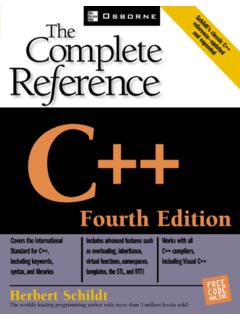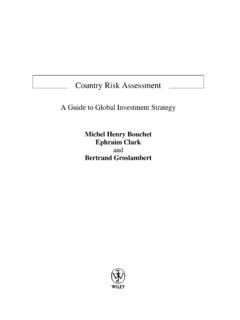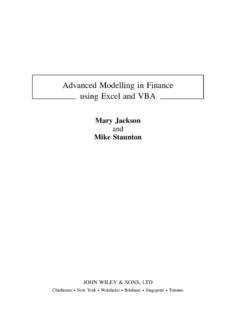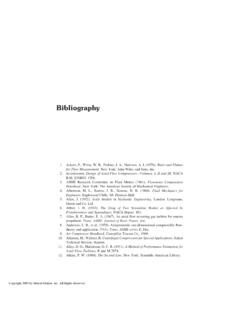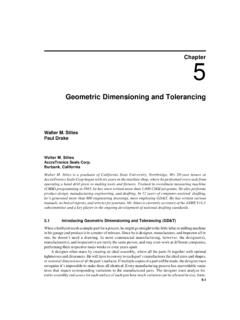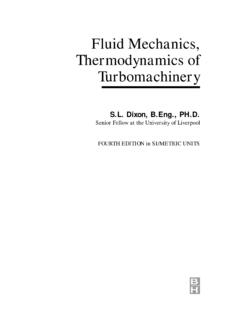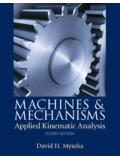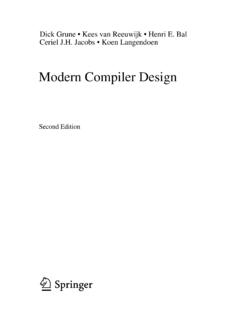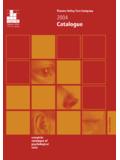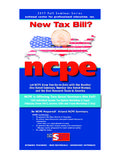Transcription of AUDITOR’S DICTIONARY - Free
1 AUDITOR S DICTIONARYT erms, Concepts, Processes, and RegulationsDavid O ReganJohn Wiley & Sons. 7/4/04 8:24 PM Page iThis book is printed on acid-free 2004 by John Wiley & Sons. All rights by John Wiley & Sons, Inc., Hoboken, New JerseyPublished simultaneously in CanadaNo part of this publication may be reproduced, stored in a retrieval system, or transmitted in any form or by any means, electronic, mechanical, photocopying, recording, scanning, orotherwise, except as permitted under Section 107 or 108 of the 1976 United States CopyrightAct, without either the prior written permission of the Publisher, or authorization throughpayment of the appropriate per-copy fee to the Copyright Clearance Center, Inc., 222 Rosewood Drive, Danvers, MA 01923, 978-750-8400, fax 978-646-8600, or on the web Requests to the Publisher for permission should be addressed to thePermissions Department, John Wiley & Sons, Inc.
2 , 111 River Street, Hoboken, NJ 07030,201-748-6011, fax 201-748-6008, e-mail: of Liability/Disclaimer of Warranty: While the publisher and author have used theirbest efforts in preparing this book, they make no representations or warranties with respectto the accuracy or completeness of the contents of this book and specifically disclaim anyimplied warranties of merchantability or fitness for a particular purpose. No warranty maybe created or extended by sales representatives or written sales materials. The advice andstrategies contained herein may not be suitable for your situation. You should consult with aprofessional where appropriate. Neither the publisher nor author shall be liable for any lossof profit or any other commercial damages, including but not limited to special, incidental,consequential, or other general information on our other products and services, or technical support, please contact our Customer Care Department within the United States at 800-762-2974, outsidethe United States at 317-572-3993 or fax also publishes its books in a variety of electronic formats.
3 Some content that appears inprint may not be available in electronic more information about Wiley products, visit our Web site at of Congress Cataloging-in-Publication Data:O Regan, s DICTIONARY : terms, concepts, processes, and regulations / David O 0-471-53118-9 (cloth)1. Auditing Dictionaries. I. 2004657'.03 dc222004003665 Printed in the United States of America10 9 8 7 6 5 4 3 2 1 7/4/04 8:24 PM Page iiWhen this DICTIONARY was under preparation a great deal of assistance, generosity,and razor-sharp comment came my way. I wish to acknowledge my gratitude toall those who helped me by answering queries, giving opinions, drawing attentionto valuable sources, and supplying information and documents from private col-lections. All of this led to a better book. I thank the following (with apologies for the inadvertent omission of any academic or professional titles): Lynne Alexander, Chris Allen, Rachel Alterator,Professor Urton Anderson, John Marnie Angeles, Dolores Argo, Susannah Bolton,Barbara Brady, Fergus Brown, Geordie Cassin, Professor Andrew Chambers,Chiba Kanan, Danielle Cohen, Dr.
4 Robert Colson, Charlie Culkin, Shirley Davies,Stefan de Greling, Wendeline Dill, Aslam Dossa, Sheila Doyle, Kim Ellis, ProfessorSerge Evraert, Michael Feland, Professor Dale L. Flesher, Ndung u Gathinji,Giam Siewhun, Damarys Gil, Deborah Harrington, Trish Harris, Ho Foong Chin,Midori Imhoof, Kathleen Kraemer, Lisa Krist, John Lamming, Professor Tom , Brenda Lovell, Janet Maillard, Professor Keith Maunders, David McNamee,Christine Miller, Professor Belverd E. Needles Jr., George Ochido, Des O Neil,Nicola Perry, Professor Michael Power, Professor Gary J. Previts, Professor PhilReckers, Kathy Rice, Professor Jeffrey Ridley, Dr James Roth, Professor Prem NathSikka, Megan Spillane, Lesley Stephenson, Chuck Teeter, Genevi ve Tremblay,Terry Trsar, Professor Curtis C. Verschoor, Professor Gerald Vinten, MargaretWalsh, Robert Whitaker, Jim Woehlke, Susan Wright, and Dan Zautis.
5 I also thank John Wiley & Sons, Inc., and Tim Burgard in particular, for tak-ing on a project unprecedented in the field of auditing. I thank Karen Ludke,Petrina Kulek, and Louise Jacob at John Wiley & Sons, Inc., for their support inseeing the book through to 7/4/04 8:24 PM Page vvi AcknowledgmentsMy record of gratitude to all those who assisted me in my search for enlighten-ment does not imply any endorsement of my definitions. Indeed, individuals mayon occasion dissent vigorously from my interpretations. This is not a dictionarycreated by a committee of consensus, and any errors are my responsibility invite readers comments, corrections, and criticisms to help ensure the qualityand accuracy of any future his DICTIONARY of the English Language(1755), Samuel Johnson remarkedthat to make dictionaries is dull work. I wouldn t necessarily agree with s view, but I can certainly confirm that DICTIONARY -writing is a gruelingtask.
6 I thank my wife, Abhishikta, for her encouragement, affection, and love,which greatly helped me in the preparation of this O ReganOxford, 7/4/04 8:24 PM Page viDavid O Regan is Head of Audit at Oxford University Press in Oxford, is a fellow of the Institute of Chartered Accountants in England and is the author of International Auditing Practical Resource Guide(Wiley, 2003)and two audit-related books for the Institute of Internal auditors . His articles andessays have appeared in and British professional and academic journals,including Internal Auditorand Managerial Auditing Journal. Prior to joiningOxford University Press he worked for United Technologies Corporation and PriceWaterhouse (the forerunner to PricewaterhouseCoopers). Further information onhis writing is available at the 7/4/04 8:24 PM Page viiPrefacexiUser GuidexvEntries A Z1 Sources279 Abbreviations295 Appendix 1: List of Institutions303 Appendix 2: List of Publications, Texts, and Legislation309 Appendix 3: Biographical Names313 Appendix 4: List of Non-English 7/2/04 1:49 PM Page ixWhat is meant by Enronitis, facilitating payment, lapping, negative assur-ance, and phantom ticking?
7 This DICTIONARY offers a measure of clarity to theseand other terms in the complex and evolving language of auditing. Auditing hasbeen in continuous development over the last century and a half, and words con-tinue to jostle for prominence in the auditing lexicon: some auditing terms turnout to be intransient and fall away into obscurity, while others gather a solid basisof usage. With increasing trends toward systematic auditing practice and theory,there is now a pressing need for rigor in the discipline s the large number of auditing professionals today, and an ever-increasinglevel of public interest with auditing, it is perhaps surprising that no dictionaryspecifically dedicated to the subject has previously book aims tofill the gap, and it is therefore the first of its kind. Its target audience includespractitioners, students, and scholars of auditing. Indeed, it should be of use toanyone whose work demands familiarity with auditing and corporate governance,including individuals subjected to auditing processes and those whose dutiesinvolve the reading of audit reports.
8 As well as serving as a reference tool, I alsohope that the DICTIONARY will act as a learning aid and as a complement to study. As this DICTIONARY has no precedent, an explanation of its aims may assist thereader in assessing its utility. My intention has been to define and clarify themeanings of essential auditing terms and concepts, to illustrate their usage, andto point toward further sources of information. In attempting to dispel some of themists surrounding auditing terminology, I have attempted to combine a reason-able degree of academic rigor with brevity3and practical relevance. A book of thissize cannot hope to provide in-depth treatment of every topic it mentions, and forthis reason many of the entries have guidance to further reading and to 7/2/04 1:50 PM Page xixii Prefacedetailed sources of information. In areas of contention or dispute, I have tried tostrike a neutral balance between differing standpoints.
9 Although the DICTIONARY sprimary aim is to give up-to-date information, it also keeps an eye on the historicalcontext in which the language of auditing has addition to the terminology and concepts of auditing, the DICTIONARY alsocovers the discipline s major international institutions, people, and all these cases, brief sketches are given, with suggested further reading andWeb links, as appropriate. Some selectivity has been necessary. With institutions,I have tried to restrict entries to the auditing-related institutes of larger example, to include every single institute of chartered accountants seemedexcessive; therefore, while I have listed the chartered accountants institute ofBangladesh (population: 140 million), I have excluded that of neighboring Nepal(population: 25 million). With individuals, I have sought to include writers, theorists,and practitioners who have made important contributions to contemporary audit-ing thought or practice.
10 I had to draw my lines somewhere, and the inclusion orexclusion of a publication, organization, or individual should not be interpreted asa definitive value judgment. The terminology of auditing has a solid center, yet no discernable circumfer-ence. Its words are not simply lying around, ready to be picked up or addition to what may be considered core auditing terminology, the dictionaryalso contains entries that derive from a number of disciplines: financial account-ing, management accounting, corporate governance, economics, finance, informa-tion technology, law, and management science. Auditing borrows terminology ina promiscuous fashion, as it has emerged from complex interactions between allthese contributory disciplines. However, auditing frequently modifies the meaningsof the words it borrows. An auditor s definition of cell, for example, differs signif-icantly from that of a biologist or a lawyer.
